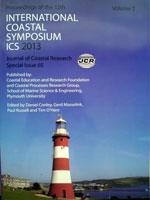Lencart e Silva, J. D., Azevedo, A., Lillebø, A.I., Dias, J.M, 2013. Turbidity and seagrass meadows under changing physical forcing.
Seagrass meadows support a range of ecosystem functions in coastal lagoons, from habitat and shelter of invertebrates and fishes to stabilizing sediments, serving at the same time as important ecological quality status indicators due to their sensitivity to water quality parameters. Seagrass meadows are recognized as one of the most productive ecosystems on Earth. Those in mesotidal mid-latitude lagoons with low flushing times primary production are greatly affected by turbidity. Here, we investigate the physical controls of turbidity in Ria de Aveiro, Portugal, by simulating its response to varying conditions of tidal and river forcing. A 2-dimensional hydrodynamic and transport model developed and calibrated for this coastal lagoon was forced with tide at the inlet, wind and river inflow. The tidal flow was found to be the main driver of changes in turbidity with river-borne plumes assuming some relevance during extreme events. The turbidity response for scenarios of increasing storm-driven events and mean sea level was compared between two existent seagrass patches and the differences in the turbidity conditions put in context of their relevant physical mechanisms. A difference in response was shown to exist between the two patches, mainly attributable to the tide which resuspends the spatially-varying sediments deposited seasonally by river inflow.





